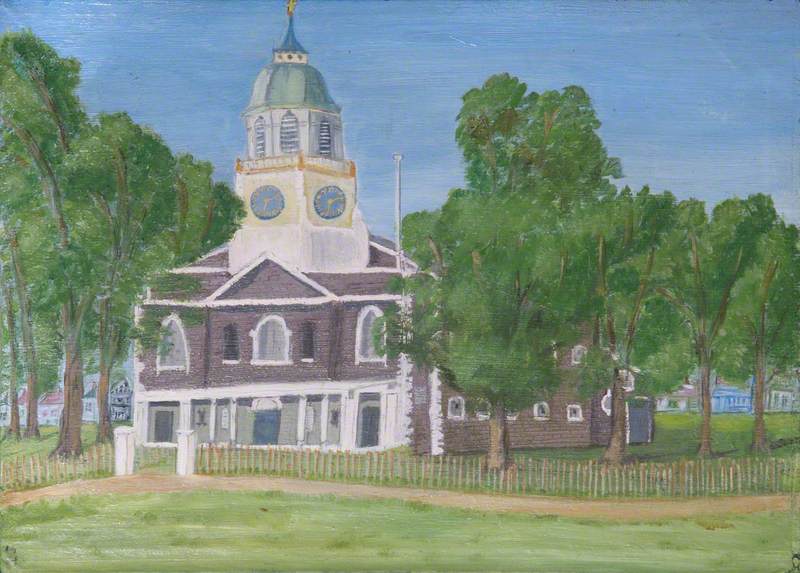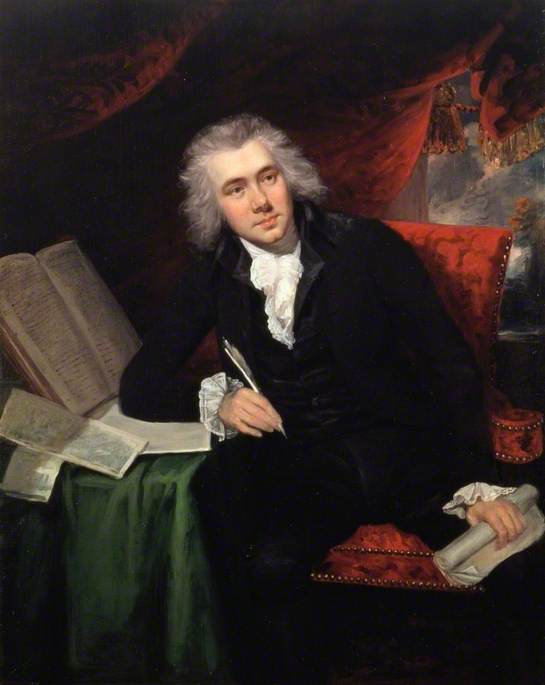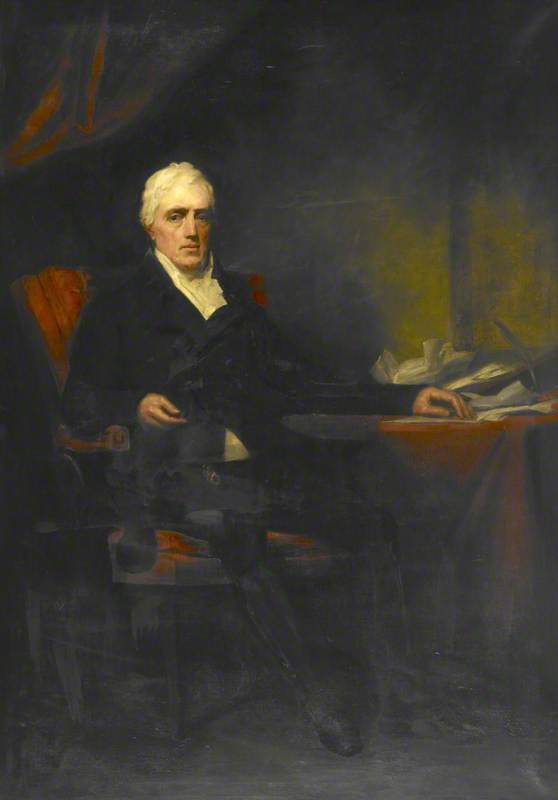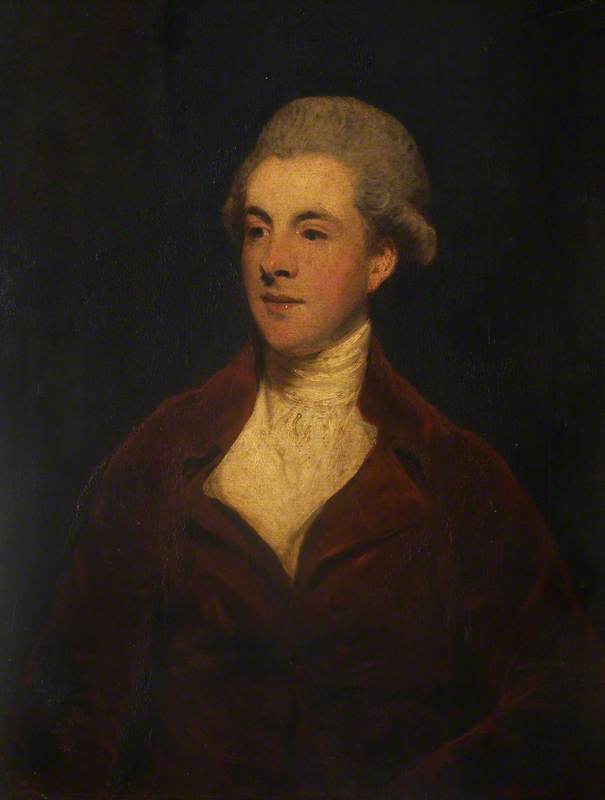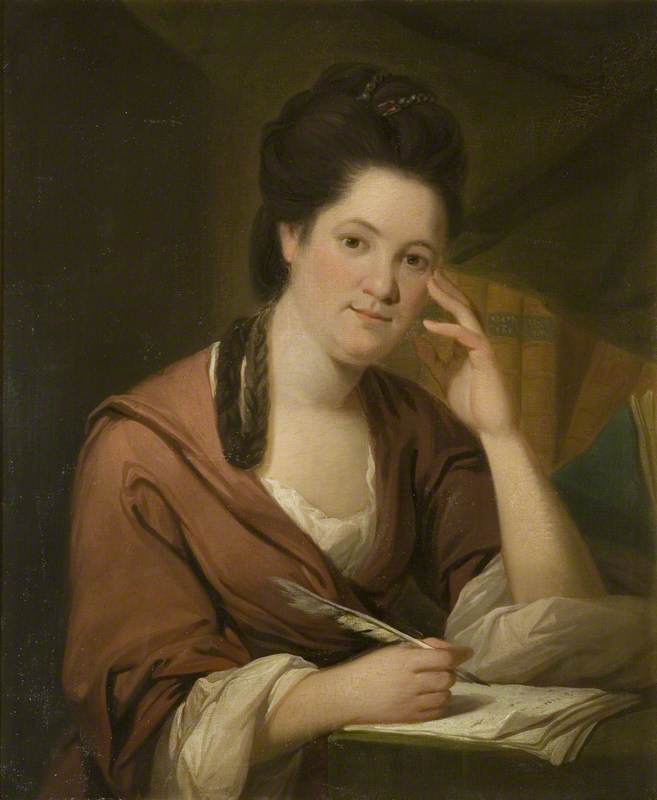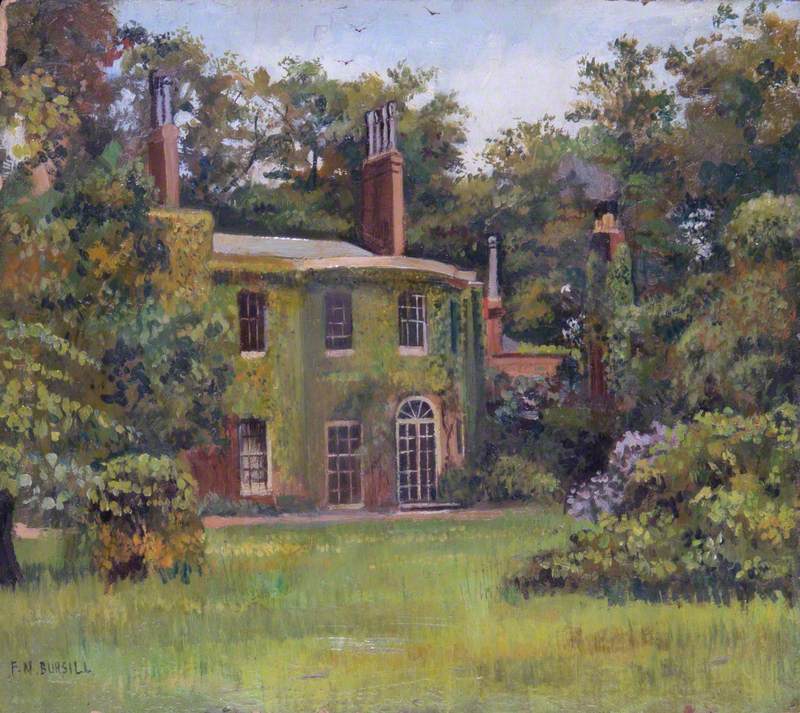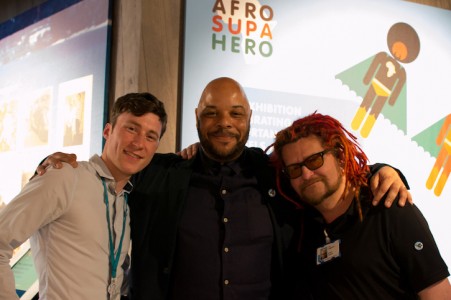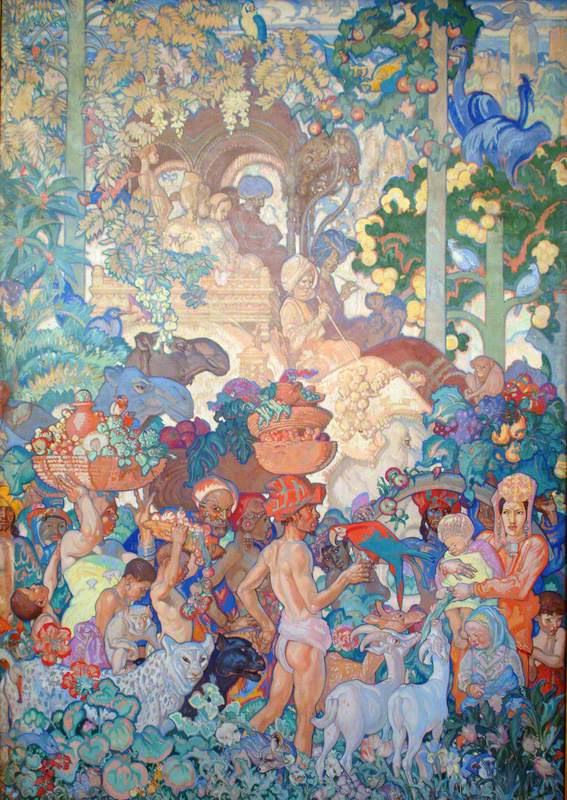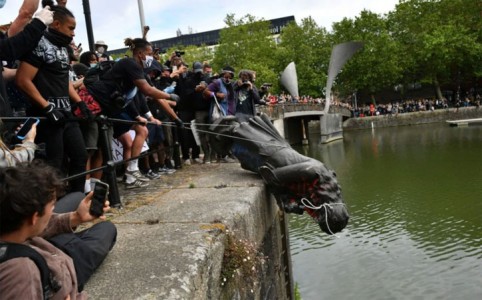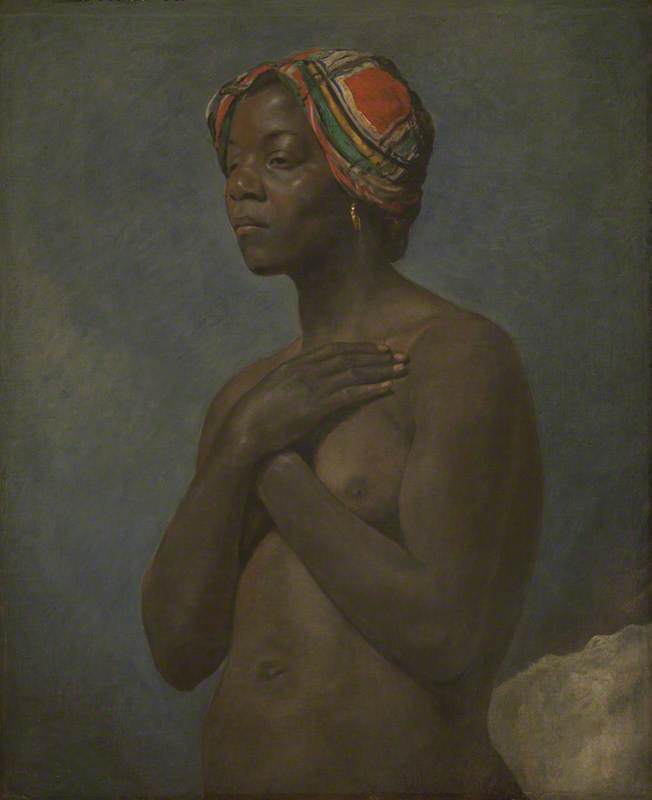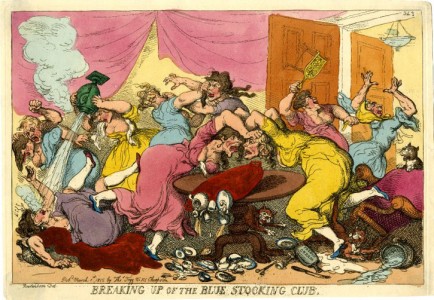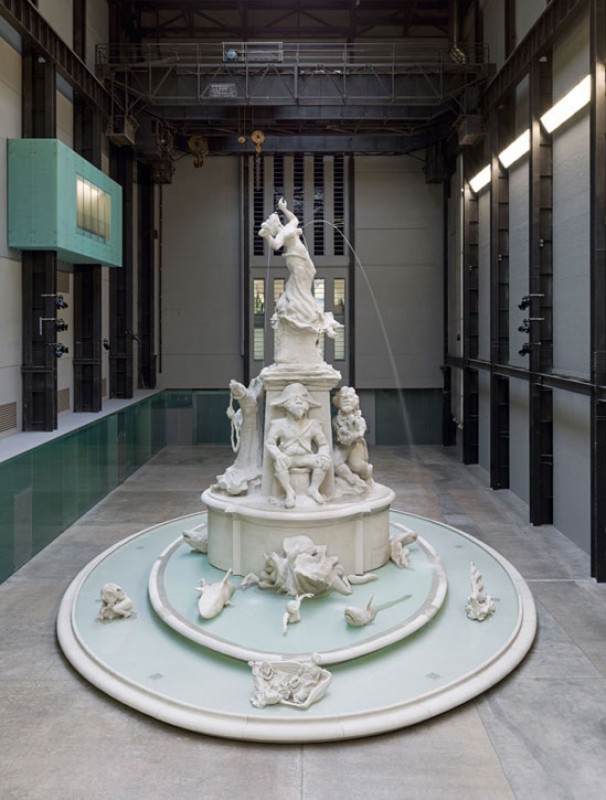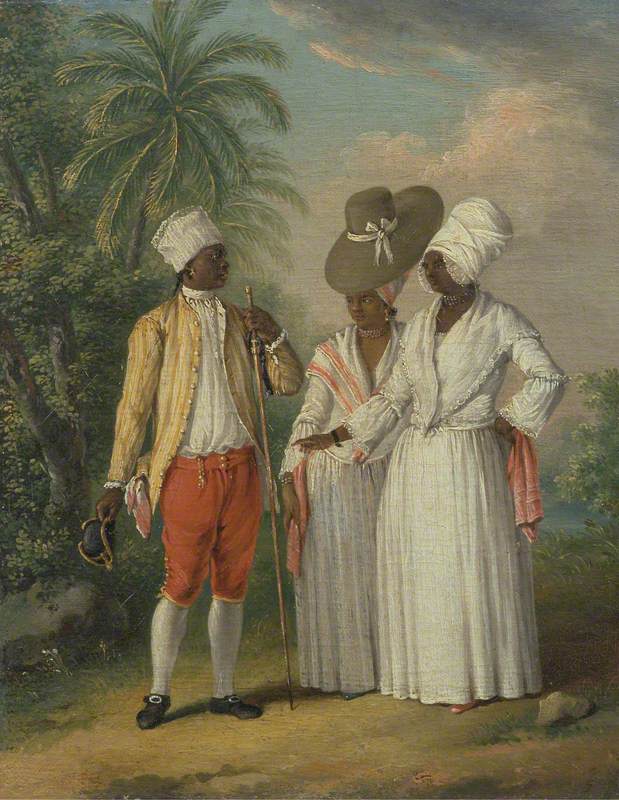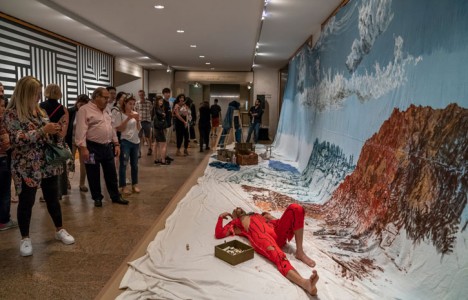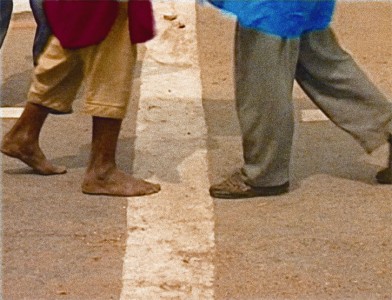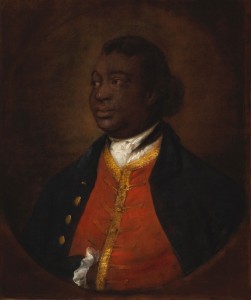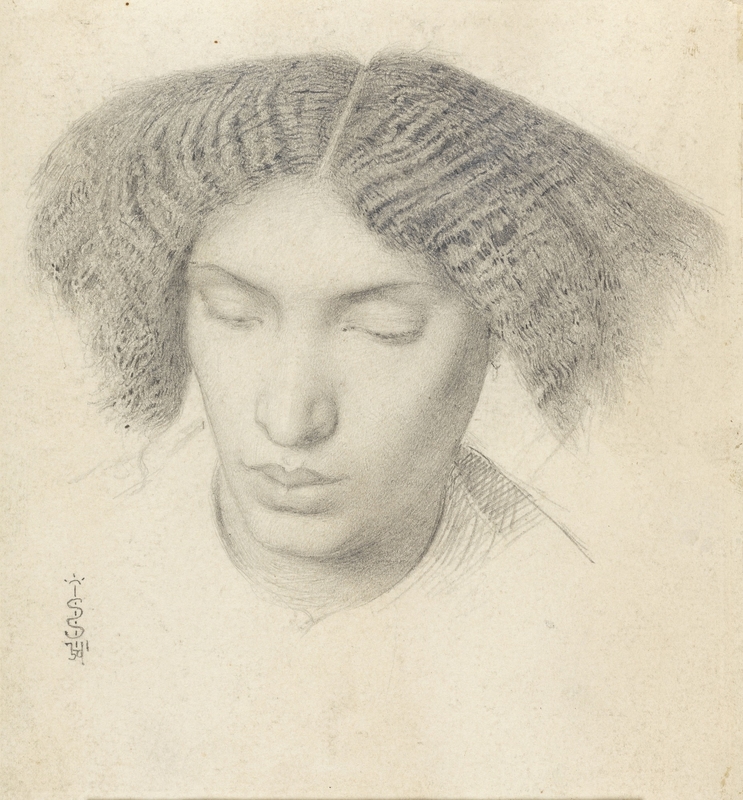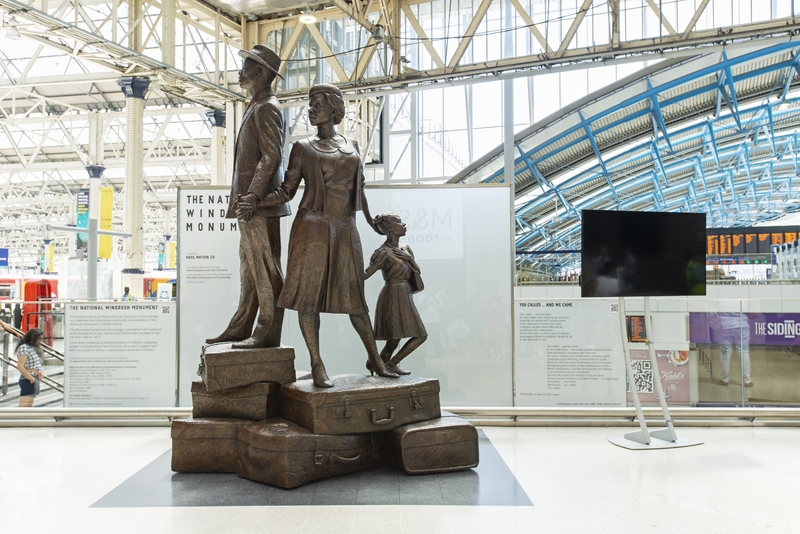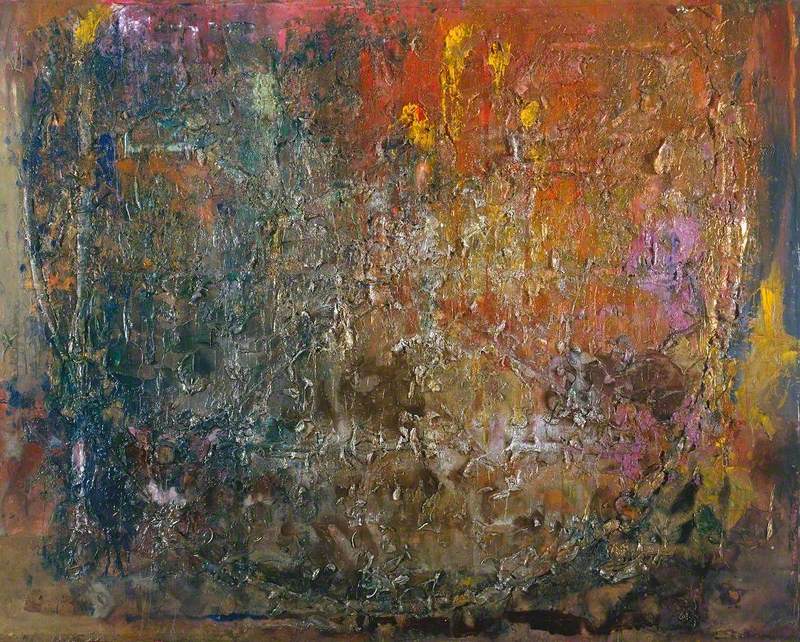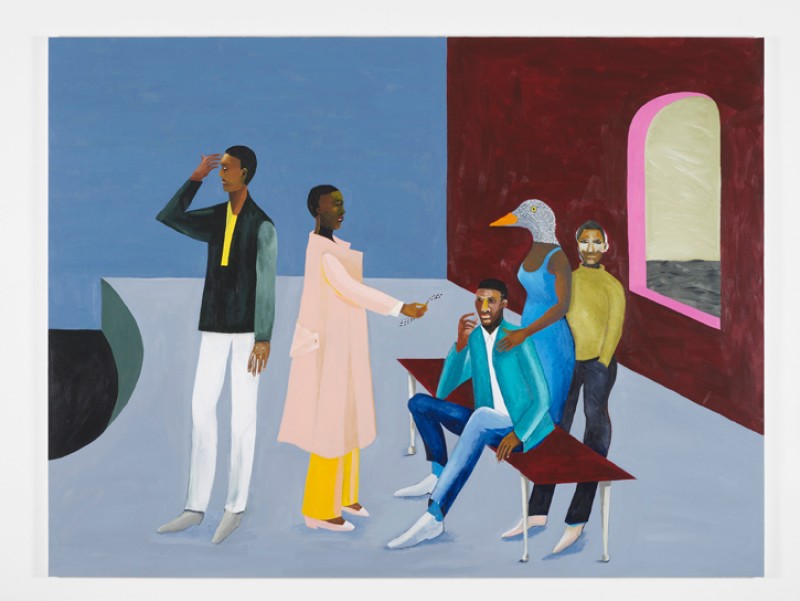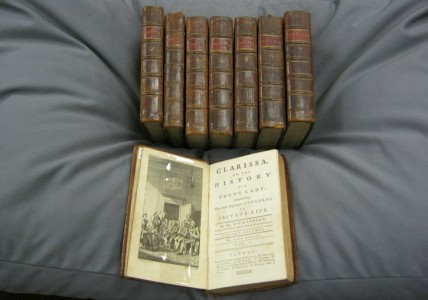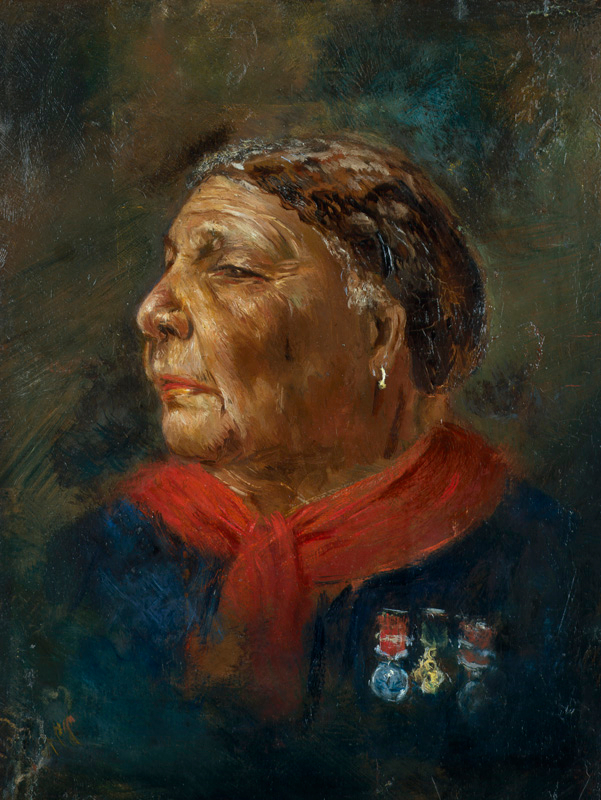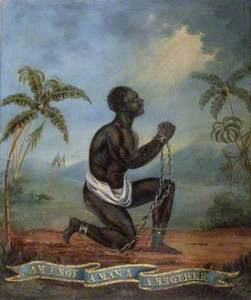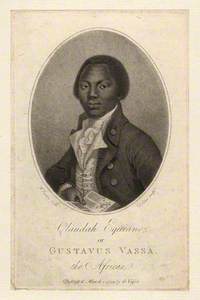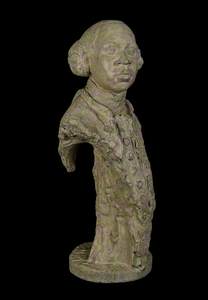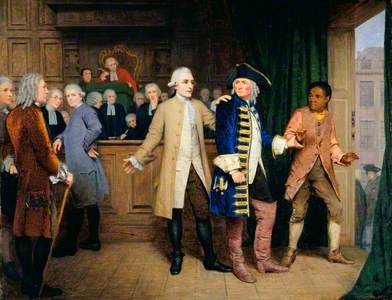When reflecting on the widespread influence of the Black Lives Matter protests during the COVID-19 lockdown, I was reminded of the activism that led to the abolition of slavery in the nineteenth century.
The Kneeling Slave, 'Am I not a man and a brother?'
c.1800
British (English) School 
From the 1780s to the 1840s, an influential group based in a small village south of London committed themselves to fight for positive social change. Named the 'Clapham Saints', though later referred to as the Clapham Sect, the members were evangelical Anglican social reformers. 'The Saints' was a disparaging name ascribed to those attending Holy Trinity Church (now St Paul's Parish Church) on Clapham Common, whose curate Henry Venn was one of the founders of the Clapham Sect, along with figures such as William Wilberforce and Henry Thornton.
The prominent, wealthy – and mostly white male – members of the Clapham group shared common political and social concerns including the liberation of enslaved peoples, the abolition of the slave trade, the reform of the prison system and even the welfare of animals. However, we should remember that before white abolitionists began their activism, prominent black figures such as Olaudah Equiano (also known as Gustavus Vassa) – a formerly enslaved man – had tirelessly campaigned for the end of slavery and dehumanisation of African people.
Olaudah Equiano ('Gustavus Vassa')
(after W. Denton) published 1789
Daniel Orme (c.1766–c.1832) 
Equiano had a profound influence on the British attitude towards slavery and the prospect of abolition.
OLAUDAH EQUIANO – African, slave, author, abolitionist
2006
Christy Symington (b.1962) 
In addition, throughout the eighteenth and nineteenth centuries, countless slave rebellions occurred globally, led by figures such as Toussaint Louverture in Haiti and Nat Turner in Virginia.
Toussaint L'Ouverture
(after an earlier work by an unknown artist) early 19th C
François Bonneville (active 1787–1802) 
Let's look in a bit more detail at some of the key figures in the Clapham Sect.
Henry Venn (1725–1797) was a persuasive preacher and the spiritual guide of the Clapham Sect as curate of Holy Trinity Church in Clapham. His son John, born in Clapham, became a leading abolitionist and philanthropist and became rector of the church in 1792.
Henry Venn (1725–1797), Fellow (1749–1757)
1770
Mason Chamberlin the elder (1722–1787) 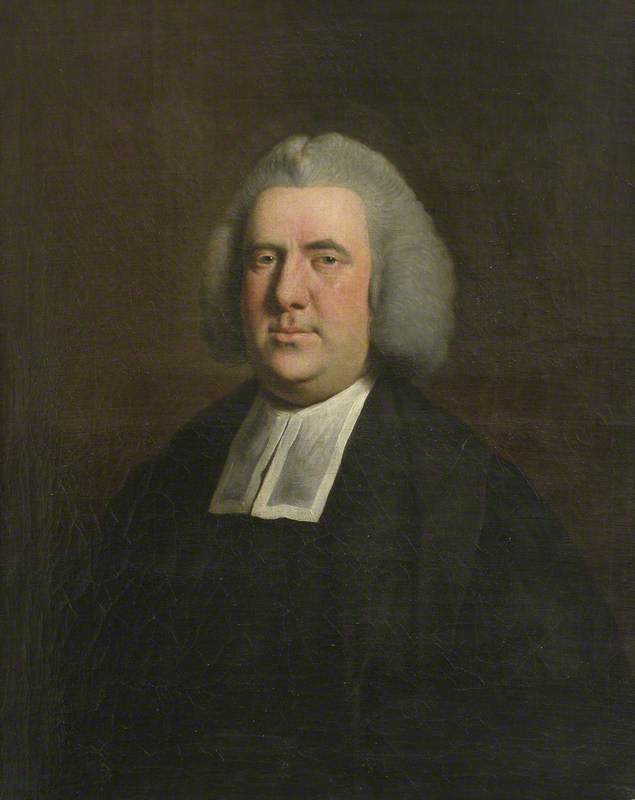
Originally from Hull, William Wilberforce (1759–1833) was a key member of the Clapham Sect and a leading abolitionist, philanthropist and MP. He challenged the attitudes of the social and political elite by advocating for social responsibility and putting faith into action.
Charles Grant (1746–1823) acquired a large fortune through silk manufacture in Malda, India, and became a Director of the British East India Company (1794–1816). With Wilberforce, he wanted to spread education and Christianity in India alongside the company's commercial interests. He helped to establish the Sierra Leone Company which created a colony for freed slaves.
Granville Sharp (1735–1813), was a scholar who campaigned for social justice. In 1787, with his fellow Anglican Thomas Clarkson and a group of Quakers, Sharp founded the Society for the Abolition of the Slave Trade. Sharp supported the resettlement of British and Canadian slaves to Sierra Leone, but despite reports about its moral decline and the resurgence of slave trading in the colony, maintained the view that the project was worthwhile.
Granville Sharp the Abolitionist Rescuing a Slave from the Hands of His Master
1864
James Hayllar (1829–1920) 
John Shore, 1st Baron Teignmouth (1751–1834), was a British official of the East India Company who served as Governor-General of Bengal from 1793 to 1798. His interest in literary history and memoirs is indicated by the books on the left in this painting.
John Shore, 1st Baron Teignmouth
1832, watercolour by George Richmond (1809–1896) 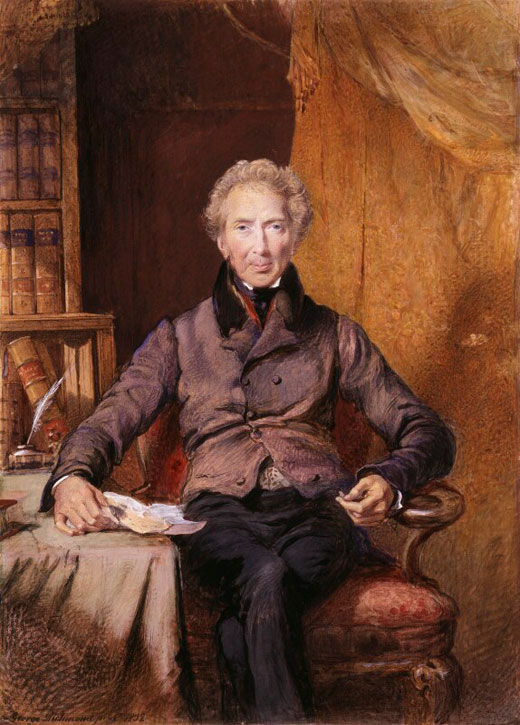
Henry Thornton (1760–1815), was an independent MP, economist, banker, philanthropist, and close friend of Wilberforce and Charles Grant. He is considered to be the financial mastermind behind the group's social reform campaigns and philanthropic causes.
Henry Thornton
1802, mezzotint by James Ward (1769–1859) after John Hoppner (1758–1810) 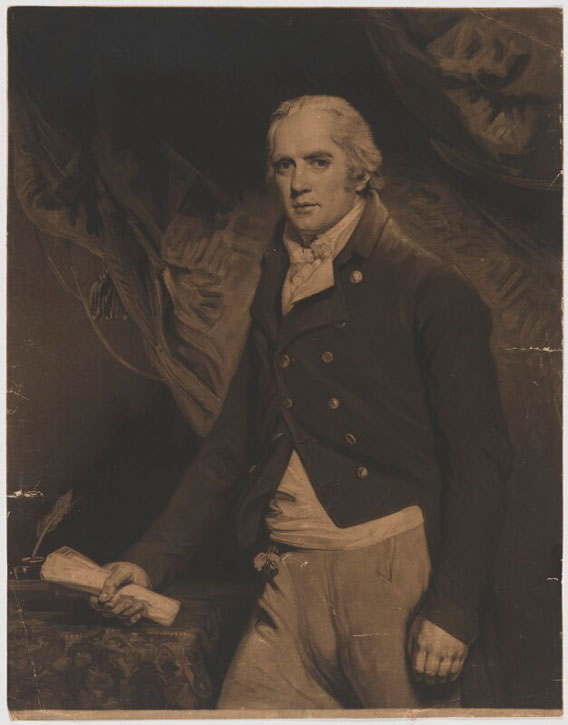
James Stephen (1758–1832) came to know the Clapham Sect through his move to the area in 1797 and second marriage to Wilberforce's sister Sarah in 1800. An MP and lawyer skilled in Britain's foreign trade laws, he was considered the chief architect of the Slave Trade Act of 1807.
Other members of the Sect included William Smith (1756–1835), a Radical Unitarian, friend of the Clapham Sect, and independent MP who lived in Clapham Common. He wrote the pamphlet A Letter to William Wilberforce (1807) that summarised arguments for abolitionism. This is possibly what is being shown in his portrait.
William Smith (1756–1835), MP for Norwich
1814
Henry Thomson (1773–1843) 
An MP who served in the Court of Exchequer and was a Commissioner for the Affairs in India, Edward James Eliot (1758–1797) helped pass the Wine Licence Bill (1792) that said that no person should have a licence to sell wine commercially without a licence to sell ale too. Its aim was to curb drunkenness.
Zachary Macaulay (1768–1838) was a Scottish abolitionist married to a Quaker. His experience working as a bookkeeper on a sugar plantation in Jamaica made him an opponent of the slave trade. He was Colonial Governor of Sierra Leone 1794–1799 and edited the Clapham Sect's magazine, the Christian Observer, from 1802 to 1816.
Thomas Fowell Buxton (1786–1845) was an MP and abolitionist. Through his friendships with Quakers, he became involved in the social reform movement. Buxton took over as leader of the abolition movement in the House of Commons after Wilberforce retired in 1825.
The Anti-Slavery Society Convention, 1840
1841
Benjamin Robert Haydon (1786–1846) 
Buxton is featured in this monumental painting which records the 1840 convention of the British and Foreign Anti-Slavery Society – established to promote worldwide abolition. In the painting, a frail and elderly Thomas Clarkson (1760–1846) addresses a meeting of over 500 delegates. Other than Buxton, identifiable portraits include the liberated slave Henry Beckford (b.c.1809) in the foreground, the Irish radical Daniel O'Connell (1775–1847) and the prison reformer Elizabeth Fry (1780–1845). You can see a full list of the identifiable sitters on the National Portrait Gallery's site.
One woman closely involved in the Sect was Hannah More (1745–1833), a bluestocking, playwright, religious writer and philanthropist. She wrote extensively about the education of women, morals and the abolition of the slave trade.
The Sect's influence was also felt in later generations – Katherine Hankey (1834–1911), daughter of a prosperous London banker and whose family were Clapham Sect members, was an evangelist and teacher. She organised and taught in Sunday schools in London, and then assisted her brother with missionary work as a nurse in South Africa.
In addition, the Clapham wives remain invisible for their efforts in keeping the group together. Barbara Wilberforce, Marianne Thornton, Sarah Stephen and Selena Macaulay all supported evangelical family values and their husbands' moral reform causes within the domestic realm.
Henry Thornton, a cousin of William Wilberforce, owned extensive grounds on Clapham Common and built three neighbouring houses with a communal garden. Battersea Rise House, the villa located on the west side of the Common, was shared by Thornton and Wilberforce while they were still single men, and its library became a meeting spot for the abolitionists. The group of Christian humanitarians was made up of MPs, many of them Oxbridge-educated, literary figures and other like-minded individuals.
Not long after, the area developed into a fashionable suburb within easy reach of the City of London. Around the turn of the twentieth century, these houses were demolished and replaced with terraced housing, but the main road named Battersea Rise still runs along the Common.
As cohesive as the Clapham Sect seemed, there must have been tensions and conflicts of interest inside as well as outside of the group. Thomas Buxton owned a brewery in Spitalfields, yet Wilberforce championed the 'Society for the Suppression of Vice' and was deeply concerned, amongst other things, with the 'keeping of disorderly public houses'. He campaigned for the prosecution of those found guilty of drinking to excess. After 1794, the wealthy slaveholder George Hibbert and his family also lived on Clapham Common and attended Holy Trinity Church every Sunday, coming face to face with the abolitionists.
Decisions made by John Shore and Charles Grant helped shape the nature of the relationship between Britain and India. Yet John Shore's choice of Wazir Ali Khan for the ruling succession of the Oudh region of North India led to the Massacre of Benares in which five British East India Company officials died. Grant benefited early in his career from the exploitation of the Malda silk weavers but used his influence to send chaplains to India, although the long-held position of the East India Company was to prevent Christian missionary work there.
By the 1800s new methods of production enabled Britain to supply India with cotton, reversing the supply chain and India's economic status. In 1811 Grant opposed a proposal to allow freedom of the press in India. These conditions helped pave the way for British colonial expansion into India and opened up the large Indian market to British products.
The efforts of the Clapham Sect were eventually rewarded when the trade of enslaved individuals was finally banned throughout the British Empire with the passage of the Slave Trade Act in 1807. However, it is disturbing to think that the Slave Trade Act did not prevent the East India Company from continuing to trade slaves.
It was only when the Slavery Abolition Act of 1833 was passed, granting full emancipation to slaves, that the purchase or ownership of slaves was made illegal within the British Empire. Even then, there was an exception for the 'Territories in the Possession of the East India Company' where slavery persisted until 1843. The Act was finally repealed and its principles incorporated into the Human Rights Act 1998. It nevertheless provided for payments to be made to former slave owners via a government loan that was only finally paid back by British taxpayers in 2015.
Recently the Sierra Leone Colonial Office papers revealed that, in the 'free' colony of Sierra Leone established by Wilberforce and his social reformers in 1792, 'apprentices' (former slaves) received no wages, only food, and those who tried to leave could be held captive for up to 14 years. This continued long after the 1807 Act abolished slave trading.
Ironically, by condoning this practice and colluding in keeping it quiet, Wilberforce ensured that the capital, Freetown, would be the last place in the British Empire where Africans could still be legally bought and sold into forced labour.
Nancy Lyons, researcher and writer
